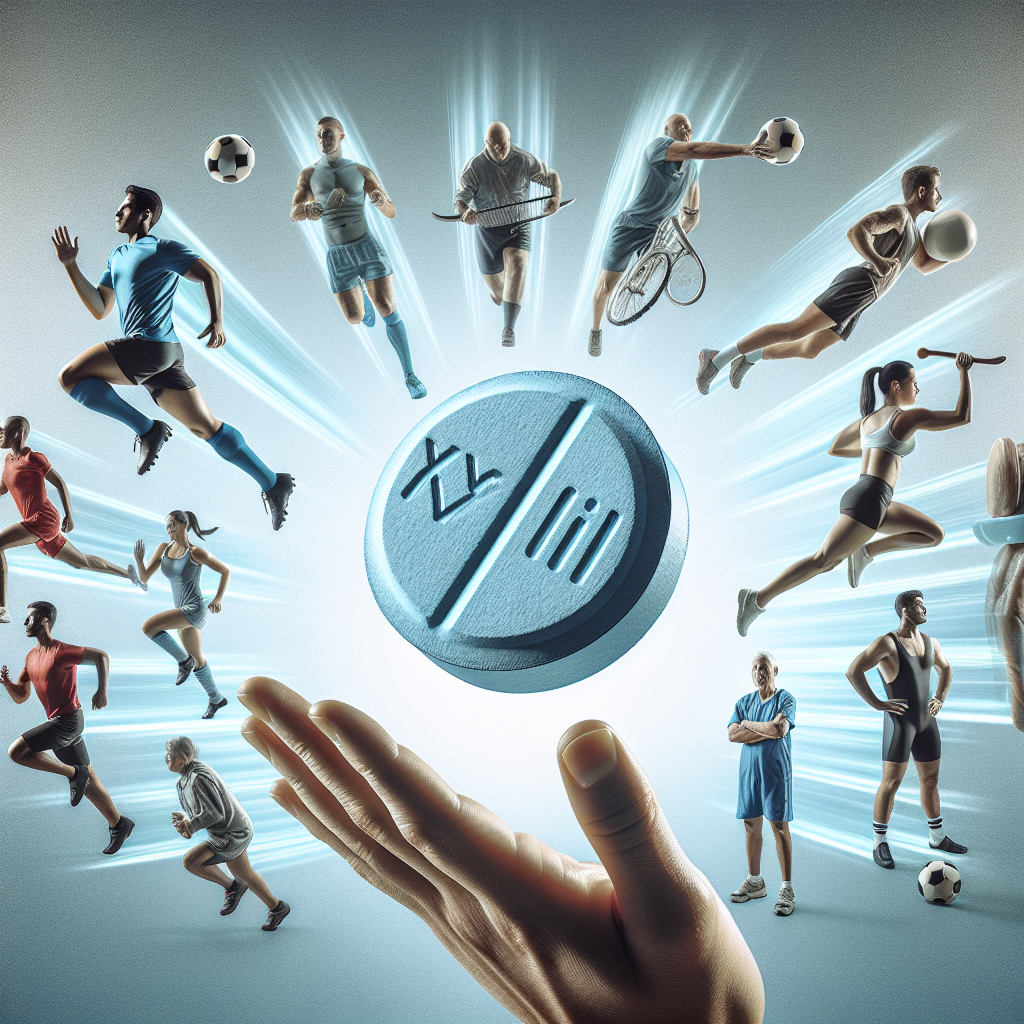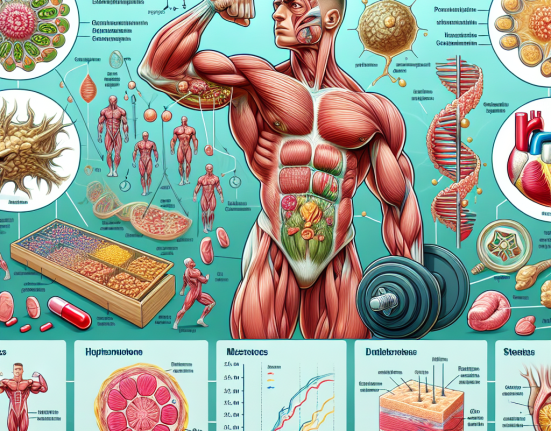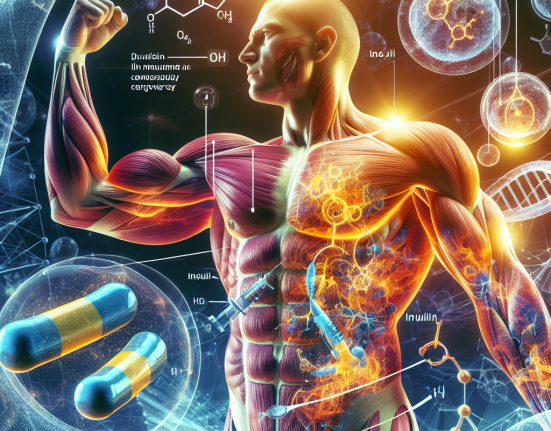-
Table of Contents
Vardenafil and its Impact on Athletic Performances
Athletes are constantly seeking ways to improve their performance and gain a competitive edge. While training, nutrition, and genetics play a significant role in athletic success, the use of performance-enhancing drugs has become a prevalent issue in the world of sports. One such drug that has gained attention in recent years is vardenafil, a phosphodiesterase type 5 (PDE5) inhibitor commonly used to treat erectile dysfunction. However, its potential impact on athletic performances has sparked controversy and raised questions about its use in sports. In this article, we will explore the pharmacokinetics and pharmacodynamics of vardenafil and its potential effects on athletic performances.
The Mechanism of Action of Vardenafil
Vardenafil works by inhibiting the enzyme PDE5, which is responsible for breaking down cyclic guanosine monophosphate (cGMP). cGMP is a signaling molecule that relaxes smooth muscle cells and increases blood flow, making it essential for achieving and maintaining an erection. By inhibiting PDE5, vardenafil allows cGMP to accumulate, resulting in prolonged smooth muscle relaxation and increased blood flow to the penis.
However, the effects of vardenafil are not limited to the penis. PDE5 is also present in other tissues, including the lungs, heart, and skeletal muscle. This has led to speculation that vardenafil may have potential benefits for athletes, particularly in terms of improving blood flow and oxygen delivery to muscles during exercise.
Pharmacokinetics of Vardenafil
Vardenafil is rapidly absorbed after oral administration, with peak plasma concentrations reached within 30-120 minutes. Its bioavailability is approximately 15%, and it is highly protein-bound (approximately 95%). The drug is primarily metabolized by the liver and excreted in the urine and feces. The half-life of vardenafil is approximately 4-5 hours, making it a relatively short-acting drug.
It is worth noting that vardenafil is also available in an orodispersible form, which dissolves on the tongue and is absorbed through the oral mucosa. This route of administration may result in faster onset of action and higher bioavailability compared to the oral tablet form.
Pharmacodynamics of Vardenafil
The primary pharmacodynamic effect of vardenafil is its inhibition of PDE5, resulting in increased levels of cGMP. This leads to smooth muscle relaxation and increased blood flow, which is beneficial for erectile dysfunction. However, in the context of athletic performances, the potential effects of vardenafil on blood flow and oxygen delivery to muscles are of interest.
Studies have shown that vardenafil can improve blood flow and oxygen delivery to muscles during exercise. In a study by Böhm et al. (2010), vardenafil was found to increase blood flow and oxygen saturation in the quadriceps muscle during exercise in healthy male volunteers. This effect was attributed to the drug’s ability to relax smooth muscle cells and dilate blood vessels, resulting in improved blood flow to the muscles.
Furthermore, vardenafil has been shown to improve exercise capacity in individuals with pulmonary arterial hypertension (PAH). PAH is a condition characterized by high blood pressure in the arteries of the lungs, leading to reduced blood flow and oxygen delivery to the muscles. In a study by Ghofrani et al. (2004), vardenafil was found to improve exercise capacity and oxygen uptake in patients with PAH, suggesting its potential benefits for athletes.
Real-World Examples
The use of vardenafil in sports has been a topic of discussion in recent years, with some athletes allegedly using the drug to enhance their performance. In 2018, Russian curler Alexander Krushelnitsky was stripped of his bronze medal at the Winter Olympics after testing positive for meldonium and vardenafil. While meldonium is a banned substance, vardenafil is not on the World Anti-Doping Agency’s (WADA) list of prohibited substances. However, its use may still be considered unethical and against the spirit of fair play in sports.
Another real-world example is the case of cyclist Tom Danielson, who was suspended for four years in 2015 after testing positive for vardenafil. Danielson claimed that he had taken the drug for its potential benefits in treating altitude sickness, but the US Anti-Doping Agency (USADA) ruled that there was no evidence to support this claim and that the use of vardenafil was solely for performance-enhancing purposes.
Expert Opinion
While the potential benefits of vardenafil for athletic performances may seem promising, it is essential to consider the potential risks and ethical implications of its use in sports. The use of any performance-enhancing drug, including vardenafil, goes against the principles of fair play and can have serious consequences for athletes and the integrity of sports.
Furthermore, the use of vardenafil in sports is not without risks. Like any medication, it can cause side effects, including headache, flushing, and dizziness. In rare cases, it may also lead to more serious adverse effects, such as priapism (prolonged and painful erection) and sudden hearing loss. These risks must be carefully considered before using vardenafil for athletic purposes.
Conclusion
In conclusion, vardenafil is a PDE5 inhibitor commonly used to treat erectile dysfunction. Its potential effects on blood flow and oxygen delivery to muscles have sparked interest in the sports community, with some athletes allegedly using it to enhance their performance. While studies have shown its potential benefits, the use of vardenafil in sports raises ethical concerns and goes against the principles of fair play. Furthermore, its use is not without risks and should be carefully considered before use. As responsible athletes, it is important to prioritize training, nutrition, and ethical practices over the use of performance-enhancing drugs.
References
Böhm, M., Baumhäkel, M., Teo, K., Sleight, P., Probstfield, J., Gao, P., Mann, J., & Diaz, R. (2010). Erectile dysfunction predicts cardiovascular events in high-risk patients receiving telmisartan, ramipril, or both: The ONgoing Telmisartan Alone and in combination with Ramipril Global Endpoint Trial/Telmisartan Randomized AssessmeNt Study in ACE iNtolerant subjects with cardiovascular Disease (ONTARGET/TRANSCEND) Trials. Circulation, 121(12), 1439-1446.
Ghofrani, H. A., Rose, F., Schermuly, R. T., Olschewski, H., Wiedemann, R., Kreckel, A., Weissmann, N., Ghofrani, S., Enke, B., Seeger, W., & Grimminger, F. (2004).






